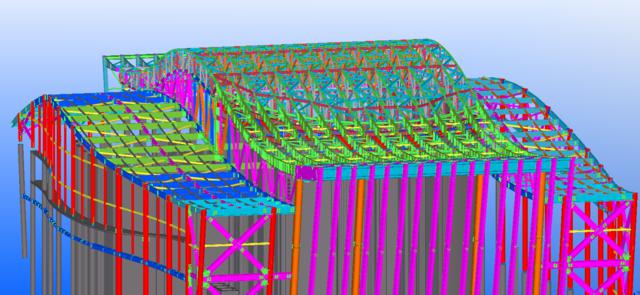
The biggest weakness of the steel structure is poor fire and corrosion resistance. As the steel structure code, steel structure must be fire and corrosion treatment.
1. Fire protection of steel structure
The fire resistance of steel columns, beams, floors and roof load-bearing components without fire protection is only 0.25h. In order to ensure the safety of life and property of the people, it is conducive to safe evacuation and fire fighting and fire, to avoid and reduce the fire loss. Fire treatment. Steel structure according to the composition of the building walls, columns, beams, floors, roof and other major components of the combustion performance and fire resistance of different buildings will be divided into one, two, three, four, fire resistance from 0.15 to 4h Wait. The thickness of the steel structure fireproof coating is an important factor in ensuring that the component meets the desired refractory limit.
Steel structure fire retardant coating acceptance, usually with the visual method to detect paint varieties, color and whether there is leakage coating and cracks; with 0.75-1kg hammer tapping coating to detect its strength, with 1m ruler detection coating flatness , According to the provisions of the standard method to detect the thickness.
2. The anti-corrosion of steel structure
Steel commonly used methods of anti-corrosion coating and hot-dip galvanized, hot spray aluminum (zinc) composite coating. The coating method is to apply the coating on the surface of the component to form a film to protect the steel structure. Anticorrosive coatings are usually made of a primer or a primer or primer. Steel structure in the coating before the steel surface to rust treatment, surface treatment is a direct impact on its protective effect. Steel rust methods are: manual or power tools rust, spray or throwing rust, pickling rust and pickling phosphating treatment rust, flame rust and other four categories. The national standard "Corrosion grade and rust grade of steel before coating" (GB8923-88) divides the rust grades into different grades according to different derusting methods and are represented by different symbols as shown in Table 1-23. The thickness of steel anticorrosive coating is an important factor to ensure the corrosion effect of steel. At present, the total thickness of the domestic steel coating (including primer and topcoat), the requirements of the indoor coating thickness is generally 100 ~ 150μm, outdoor 150 ~ 200μm.
Steel structure coating quality inspection before painting, painting process, after painting quality inspection. Before the inspection, the main inspection of steel surface rust is consistent with the requirements and the provisions of the relevant national standards; coating process. The main inspection is to measure the thickness of the wet film to control the dry film thickness and film quality; Check the main inspection is the appearance of the film is uniform, flat, plump, shiny, color, paint, coating times, coating thickness is consistent with the design requirements.
Steel structure coating project acceptance is in accordance with the "steel structure construction quality acceptance" (GB50205-2001) acceptance.
Hot-dip galvanized, hot-sprayed aluminum (zinc) composite coating method is a long-term anti-corrosion method, which makes the corrosion resistance of steel structure to 20-30 years.



